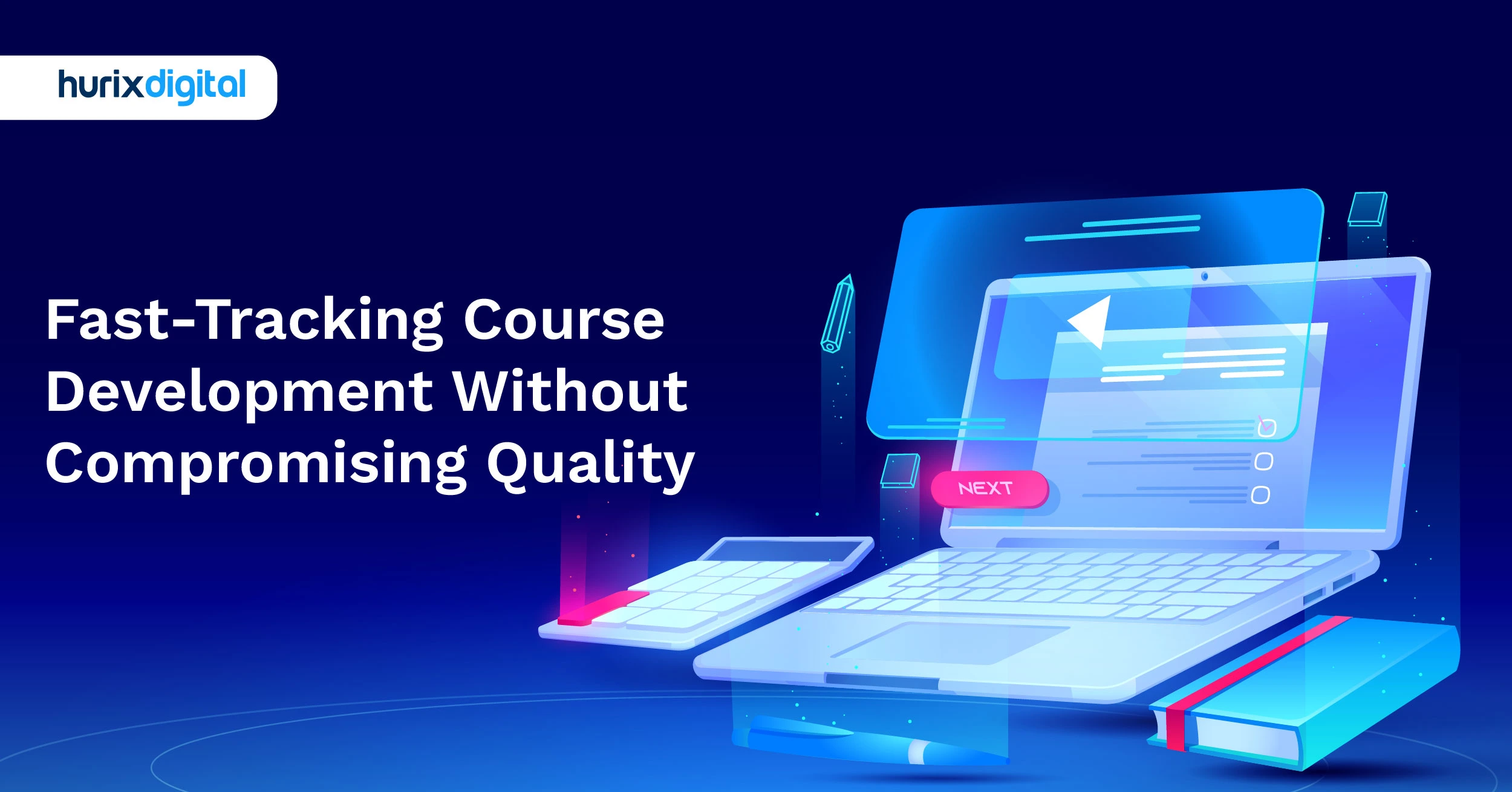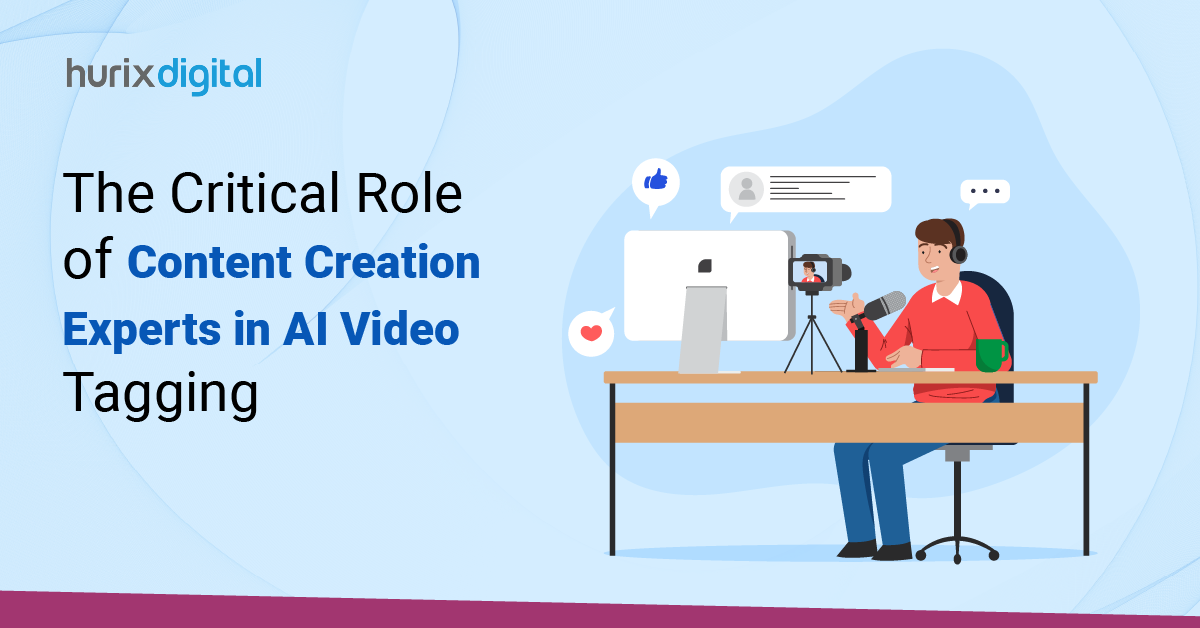
Why Should You Outsource Your Content Development?
Summarize with:
In the present economic climate, organizations are under intense pressure to provide high-quality and interactive learning experiences.
A recent analysis of research shows that 99% of organizations are spending more and offering e-learning options for employees. However, creating in-house e-learning content is a very time-consuming and resource-consuming task.
In fact, for many organizations, limited in-house expertise combined with tight deadlines make outsourcing a strategic solution. By partnering with an experienced eLearning company, you can free up valuable resources and speed up your outsourcing process in content development, then deliver phenomenal learning experiences.
Table of Contents:
- Knowing the Value of Outsourcing
- Advantages of Outsourcing Content Development
- Leveraging LMS Integration for Seamless Content Delivery
- How to Choose the Right LMS for Your Business
- Blended Learning: The Best of Both Worlds
- Conclusion
Knowing the Value of Outsourcing
Outsourcing your content development can be a strategic move that offers numerous advantages.
By partnering with experienced e-learning companies, you can see the following benefits:
1. Focus on your Core Strengths
Content development is a time-consuming task. By doing content outsourcing, you free up your instructors to do what they do best: Teach their students and focus on their core activities. It is also important to note that content development is a complex process and not restricted to simply digitizing lessons.
Apart from writing, it also involves research, fact-checking, formatting, optimizing for search engines, and checking for grammar and inconsistencies. It is, therefore, prudent to outsource content to an eLearning company that has the subject matter experts to do justice to your content development. This will not only take the pressure off yourself and your teachers but also help you retain full editorial control.
2. Achieve Immersive Content
One of the major benefits of having eLearning content development outsourcing through online content is that it is more engaging and immersive as compared to print textbooks. Because it is created using a combination of rich media formats such as audio, video, graphics, animations, etc.
For example, you may have a 3D diagram that brings alive an abstract Mathematical concept or animations that virtually show human physiology. Going further, you may have lessons in the form of games that challenge the students to achieve some learning goals, motivated by rewards and challenges.
Then again, you may have bulleted lists that summarize lessons and enable the students to recall the main points. Online resources, therefore, make lessons more interesting and engaging for the students by capturing and retaining their interest.
That being said, educational institutions may not have an in-house team of instructional designers who can create media-rich content. A better option for them is to outsource their content development requirements.
Also Read: Outsourced Content Development vs In-house Content Development
Advantages of Outsourcing Content Development
Here are the main advantages of outsourcing your content development:
1. Cost-Effective Solution
Outsourcing content development dramatically saves costs related to in-house content development, that is, salaries, infrastructure, and technology.
Here, you get the economies of scale provided by a third-party content development service provider that will enable you to optimize your budget and put the funds into other vital areas of your business.
2. Access to Specialized Expertise
eLearning companies have teams of experienced instructional designers, writers, and developers who produce outstanding, engaging content. Such experts possess the skills and knowledge to tailor content precisely to the specific needs and audience of your target group.
3. Faster Time-to-Market
You can produce content much more quickly with outsourcing, which expedites the introduction of new goods, training programs, and marketing campaigns. By leveraging the resources and experience of an outsourcing provider, you can outperform the competition and reduce your time to market.
4. Scalability
eLearning companies can upscale their resources to satisfy your content requirements, no matter how fast your content requirements are growing. With the help of outsourcing providers, you can get small projects or huge content development initiatives done according to your changing needs.
5. Focus on Core Competencies
Outsourcing content development allows you to focus on your core business activities. In other words, you can delegate your internal resources toward strategic initiatives that can drive growth and innovation through it.
6. Superior Quality Content
Professional eLearning firms can provide excellent content that is relevant, captivating, efficient, and in line with the learning goals of your company. To produce understandable visual communications, outsourcing providers use cutting-edge tools and industry best practices.
Also Read: 9 Reasons for the Growth of eLearning in Education
Leveraging LMS Integration for Seamless Content Delivery
To benefit from an LMS, you can outsource your content development to an eLearning company with their own LMS, which you can use not only to create your content but also to upload and disseminate it to your learners.
Simply defined, a learning management system (LMS) is a system used to administer training. An LMS has a set of tools for converting print documents into digitalized versions.
You can also create, upload, and disseminate media-rich content on a cloud. Authorized students are provided login credentials, which they can use to log in and access the cloud-hosted content anytime and from anywhere. An LMS allows educational institutions to scale their operations and provide remote or distance education.
Besides, an LMS normally includes translation tools, which you can use to translate and outsource content creation in several languages and, therefore, reach a much wider audience. However, an LMS requires a huge investment and an IT team to run.
How to Choose the Right LMS for Your Business
Educational institutions must ensure their web content is mobile-friendly because more individuals are accessing information on their mobile devices. Outsourcing your content development may help you attract the best talent for creating mobile learning content.
eLearning content is very different from mobile content. Mobile content takes the form of micro- or bite-sized nuggets that students can get on their phones whenever and wherever. Thus, it frees up a student’s learning from the congestion of the classroom while being able to learn at his own pace.
An audio recording that synthesizes a lesson, for instance, could help in providing bite-size learning nuggets to students while they are on their way to school. In this respect, it is interesting to mention that mobile content does not only refer to mobile devices; one can also access mobile content on tablets, PCs, and laptops.
Through the outsourcing of eLearning content development, one is able to reach IT experts who are skilled in the development of adaptive content that successfully performs across many devices.
One of the learning methods most educational institutions are now adopting is the blended learning method. As the name suggests, blended learning is a combination of online and classroom learning.
Blended Learning: The Best of Both Worlds
An instructor in a classroom can supplement their lectures with online resources. Alternatively, they can use an online environment to deliver a lecture to students assembled in a classroom or a specified location.
Online resources are available in different media formats, for example, animations and videos, which bring alive subjects such as Math and Science that are either difficult or monotonous and also help to improve information retention.
However, to build blended learning experiences, a careful balancing act between technology, skills, knowledge, and experience is needed. You can access a wealth of talent that can produce blended learning materials that let you reap the rewards of both online and offline learning by contracting with an eLearning company to handle your content production.
Also Read: Best Practices for Effective Online Course Development
Conclusion
Digital technology has impacted all aspects of our lives, including how we teach and learn. Creating and leveraging online content is no longer a choice but a necessity.
With online content development, educational institutions can benefit from the best of online and classroom teaching. Besides, they can also expand their reach and deliver distant education to a remote audience.
However, content development is a time-consuming and complex process best left to subject matter experts. Therefore, it is a good idea to partner with a great educational publishing outsourcing company to outsource your content development needs.
At Hurix Digital, we specialize in high-quality, customizable content development for organizations worldwide. Our goal is to help you identify the key factors to consider when selecting the best content development service provider for your needs. Got questions? Our team is here to assist you every step of the way.
 A Space for Thoughtful
A Space for Thoughtful 



